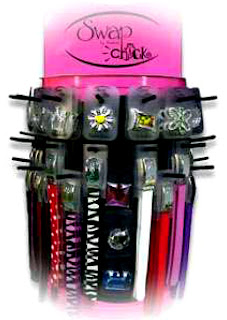The fame of the registered mark
SHAPE for print and online magazines and for related online Internet content weighed heavily in opposer Weider's favor in its opposition to registration of the mark
SHAPES for beauty salon, nail care, and health spa services. The Board sustained this opposition on the ground of likelihood of confusion under Section 2(d), declining to reach opposer's dilution-by-blurring claim.
Weider Publications, LLC v. D & D Beauty Care Company, LLC, 109 USPQ2d 1347 (TTAB 2014) [precedential].
Opposer's SHAPE magazine focuses on health, fitness, beauty, and fashion. Its average monthly circulation of 1.65 million copies puts it in first place among women's active lifestyle magazines, and fourth among magazines directed to young women. The SHAPE.COM website receives about three million visitors per month. Across all platforms, opposer's SHAPE publications reach some six million people monthly, the vast majority of whom are women. Opposer periodically sponsors live events under its SHAPE mark, at which various beauty services are provided. Its annual revenues since 2009 have been substantial.
Applicant D&D's typical customers are, not surpisingly, women. It offers its services under the registered mark SHAPES BROW BAR. The opposed application for the mark SHAPES was filed on the basis of Section 1(b) intention to use.
The Board first considered the issue of fame, observing that fame plays a "dominant role in likelihood of confusion cases." Because of the significance of the fame factor in the
duPont analysis, the party asserting fame must clearly prove it.
The Board pointed out that fame for Section 2(d) purposes is a concept distinct from fame for dilution purposes. For likelihood of confusion, the opposer need not show fame "among every segment of the U.S. population." It is enough that a "significant portion of the relevant consuming public ... recognizes the mark as a source indicator."
Applicant D&D argued that opposer's evidence was inadequate because there was no evidence regarding "the impact of [the] SHAPE mark on the minds of consumers" (e.g., declarations from consumers or survey results) and no evidence of unsolicited media attention. Fame under Section 2(d), however, may be measured indirectly via sales and advertising figures, length of use, general reputation, and the like. There is no requirement that a party submit declarations, surveys, evidence of unsolicited media references, or other direct evidence.
The Board observed that, based on the record evidence, advertisers place a premium on advertising in SHAPE magazine. Opposer has a substantial online presence through its website and its apps for smart phones, tablets, and computers, allowing opposer to expand the reach of its brand exposure. Its magazine articles have won numerous editorial awards, and its representatives have appeared on nationally recognized television shows.
The Board therefore found that opposer's SHAPE marks (in standard character and stylized form) are, for purposes of the likelihood of confusion analysis, famous for print and online magazines and for related online Internet content.
Applicant understandably did not contest the issue of the similarity of the marks. As to the involved goods and services, the Board found helpful its decision in
The Conde Nast Publications Inc. v. Vogue Travel, 205 USPQ 579 (TTAB 1979), wherein it found a likelihood of confusion between Conde Nast's magazine trademark VOGUE and the opposed mark VOGUE for travel agency services, based on the fact that the topic of travel was a significant feature of the magazine. Here, approximately 35 percent of opposer's editorial content deals with beauty and fashion related topics, and 30 percent of its advertising content is directed to that same field. In addition, the magazine has included reviews of health and beauty spas, and opposer has cross-promoted its magazine with spa operators and has offered giveaway prizes to spa destinations.
The Board found that the "logical underpinnings of
Conde Nast are equally, if not more relevant in the digital age with the delivery of magazines now available via websites and mobile apps." It therefore found a close relationship between the content of SHAPE magazine and the services identified by applicant.
The Board acknowledged that the goods of opposer and the services of applicant travel in distinct trade channels. However, both applicant and opposer target the same demographic audience: women. There was no evidence that applicant's consumers are particularly deliberate in making their purchasing decisions.
Applicant pointed to use of the word "shape" in third-party applications and at third-party websites, arguing that opposer's marks are weak. The Board noted, however, that pending applications have no probative value, and it observed that the third-party uses were in unrelated fields or involved multi-word composite marks that conveyed different commercial impressions from opposer's mark. Even though SHAPE has some suggestive significance in opposer's field of interest, opposer has achieved such a degree of fame that the mark SHAPE "signifies only opposer as the source."
Finally, applicant D&D pointed to the lack of proof of actual confusion despite concurrent use of the involved marks since 2007. The Board pointed out, once again, that the test is likelihood of confusion, and proof of actual confusion is not required. In any case, applicant uses the mark SHAPES BROW BAR, not SHAPES, and the recitation of services in the opposed application is broader than that in the SHAPES BROW BAR registrations.
Balancing the relevant
duPont factors, the Board found confusion likely, and it sustained the opposition on the Section 2(d) ground.
Read comments and post your comment here.
TTABlog note: I wonder what magazines applicant B&B has laying around its beauty salons?
Text Copyright John L. Welch 2014.






























